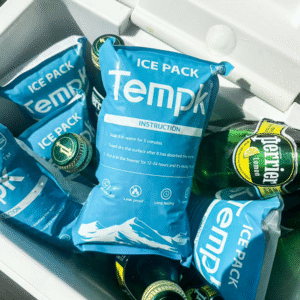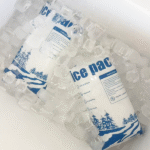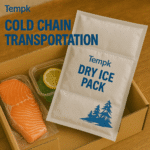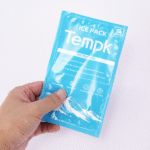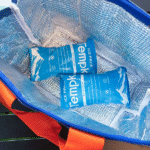Dry Ice via Air: 2025 Compliance, Sizing & SOPs
If you ship frozen goods, dry ice via air remains the fastest, most reliable way to hold ≤ −18 °C in transit. In 2025 you’ll pass acceptance by venting the package, marking UN1845 with net kilograms, applying a Class 9 label, and adding the correct Air Waybill (AWB) entries. Plan 5–10 lb/day of dry ice for small shippers and remember the 2.5 kg passenger and 5 lb USPS air limits. This guide blends regulation, field practice, and carrier nuance you can apply today.
-
What does dry ice via air require in 2025? (PI 954, UN1845, Class 9, net‑kg, AWB order)
-
How much should you pack for 24–72 hours? (5–10 lb/day rule + physics‑based check)
-
How do you pack, label, and document to pass acceptance? (10‑minute SOP)
-
What are passenger and postal limits? (2.5 kg baggage, 5 lb USPS air)
-
When to choose dry ice vs. PCM/gel? (decision tool for lanes and temperatures)
What does dry ice via air require in 2025?
Core answer: Use packaging that vents CO₂, mark the proper shipping name (“Dry ice” or “Carbon dioxide, solid”) with UN1845 and the net dry‑ice mass (kg) on each package, and apply a Class 9 label. For cargo, the AWB must show UN1845 → proper name → package count → net kg in that order. Airlines increasingly collect net kg at booking to manage aircraft CO₂ limits. Follow the 2025 acceptance checklist to avoid refusals.
Why this matters (expanded): “Vented” means never sealing dry ice in airtight liners; pressure from sublimating CO₂ can rupture packaging. Operators and integrators review UN number, name, net kg, and hazard label during acceptance, and many ask for net kg during booking. Keep baggage rules separate: 2.5 kg per passenger is not a cargo limit; cargo follows PI 954 and operator variations. Craft two micro‑SOPs if teams sometimes travel with samples and sometimes tender freight—one for cargo and one for baggage.
How to mark UN1845 and Class 9 for dry ice via air
Place UN1845 and the proper name on the same face as the Class 9 label when space allows. Keep the 100 mm diamond unobstructed—don’t write inside it. Print net kg per package clearly; if you use an overpack, repeat or aggregate the total net kg on the overpack. Most carriers align on these details and may specify minimum font size or label placement, so train packers to apply marks consistently before tender.
| AWB & Package Requirement | What to Write | Where it Goes | Why it Matters |
|---|---|---|---|
| UN number | UN1845 | Package & AWB | Identifies dry ice as Class 9 DG |
| Proper name | Dry ice / Carbon dioxide, solid | Package (same face as Class 9 when possible) | Standardizes hazard communication |
| Net mass | X kg per package | Package (and overpack total if used) | Aircraft CO₂ load management |
| Hazard label | Class 9 (100 mm) | Package exterior | Acceptance checkpoint; keep unobscured |
Practical tips you can use now
-
Never seal liners: Use vent‑friendly pouches or leave liners open.
-
Layer smartly: Bottom pouch → product → top pouch; add sides for 48–72 h lanes.
-
Precondition: Hard‑freeze product; pre‑chill the shipper to cut early loss.
-
Book with numbers: Have net‑kg per package ready during booking.
Real‑world case: A confectioner split 10 lb into two pouches, printed UN1845 with net kg on the same face as Class 9, added the AWB entries in order, and cleared acceptance on the first attempt—even with a connection delay.
How much dry ice via air do you need for 24–72 hours?
Short rule: Start with 5–10 lb (2.3–4.5 kg) per 24 h for a small (≈10–20 L) insulated shipper. Use the higher end for hot lanes, frequent door‑opens, or lower‑R insulation. Validate with a quick lane test and add a “delay day” if your route stalls.
Physics check (to right‑size): Dry ice’s cooling capacity comes from its sublimation energy (~571 kJ/kg). If you estimate your shipper’s hourly heat leak, you can compute a minimum dry‑ice mass and then add 10–20% buffer.
Quick sizing table (10–20 L shipper)
| Duration | Mild (≤ 22 °C) | Warm (23–30 °C) | Hot (≥ 31 °C) | What it means for you |
|---|---|---|---|---|
| ~24 h | 2–3 kg | 3–5 kg | 5–6 kg | Split into ≥2 pouches for surface coverage |
| ~48 h | 4–6 kg | 6–8 kg | 8–11 kg | Add a thin −20 °C PCM at product face |
| ~72 h | 6–8 kg | 9–12 kg | 12–15 kg | Consider higher‑R insulation or a larger box |
How to pack, label, and document dry ice via air (PI 954)?
10‑minute SOP (printable):
-
Freeze & stage: Product ≤ −18 °C; pre‑chill the shipper.
-
Bag & split: Load dry ice into vent‑friendly pouches; split into two or more.
-
Layer: Bottom pouch → payload → top pouch; fill voids lightly.
-
Venting: Close securely but do not make airtight.
-
Mark & label: UN1845, proper name, net kg, Class 9 on same face when size allows.
-
Overpack (if used): Show total net kg on the overpack.
-
AWB entries: UN1845, proper name, package count, net kg (in that order).
-
Book with net kg: Operators may check aircraft‑type limits before acceptance.
Passenger & postal limits for dry ice via air—what changes on baggage and mail?
-
Passenger baggage: With airline approval you may carry ≤ 2.5 kg (5.5 lb) per passenger, in vented packaging marked “Dry ice/Carbon dioxide, solid” and showing net quantity. This rule does not apply to cargo.
-
USPS air mail: ≤ 5 lb per mailpiece under Packaging Instruction 9A; package must vent.
-
Domestic ground (U.S.): Dry ice alone is generally not regulated, but you still must vent and protect handlers from CO₂ exposure. Keep your dry ice via air SOP separate from ground rules.
Dry ice via air or PCM/gel—how should you choose?
Use dry ice via air when any two are true:
-
Transit time > 36 h
-
Ambient peaks ≥ 30 °C
-
Product must stay ≤ −18 °C (no partial thaw)
-
Operator accepts UN1845 on your service
If not, trial a −20 °C or +5 °C PCM (phase‑change material) with higher‑R insulation to reduce DG handling and simplify acceptance.
Interactive self‑check (score yourself)
-
Packaging vents CO₂ (yes = 1)
-
Class 9 label unobscured (yes = 1)
-
UN1845 + proper name + net kg printed (yes = 1)
-
AWB entries in order (yes = 1)
-
Overpack shows total net kg (if used) (yes = 1)
-
Net kg provided at booking (yes = 1)
Score 5–6: flight‑ready. Score ≤ 4: fix gaps before tender.
2025 developments & trends in dry ice via air
What’s new: The 2025 cycle tightened the practical expectation to provide net dry‑ice kg during booking so operators can check aircraft CO₂ limits. Carriers refreshed acceptance job aids (label size/placement; don’t write inside the diamond). Many brands now pair a thin −20 °C PCM at the product face with perimeter dry ice to reduce DG mass while damping door‑open spikes.
Latest at a glance
-
Booking data matters: Net kg collected up front to validate aircraft limits.
-
Operator checklists updated: Emphasis on UN1845, net‑kg marks, and clear Class 9 placement.
-
Hybrid packouts: Small PCM layer + dry ice → fewer spikes without sacrificing frozen integrity.
Market insight (plain English): Expect continued growth in frozen lanes and greater use of validated shippers, loggers, and printable SOPs so teams can train in minutes and pass acceptance reliably.
Frequently Asked Questions
Do I need a Shipper’s Declaration for dry ice via air?
Not when dry ice only refrigerates non‑dangerous goods. You must still mark the package (UN1845, proper name, net kg), apply Class 9, and add the AWB entries in order. Use the acceptance checklist to self‑audit.
How much dry ice via air for 48 hours?
Plan 10–20 lb for a small insulated shipper, increasing toward 20 lb for hot lanes or frequent door‑opens, then tune via a lane test.
What’s the per‑package limit for cargo?
Carrier job aids commonly reference ≤ 200 kg net dry ice per package under PI 954; aircraft‑level limits can also apply. Confirm operator variations if you approach high masses.
Can I use dry ice via air for food shipments?
Yes. For frozen foods (e.g., ice cream) use dry ice; for 2–8 °C groceries, switch to PCM/gel to avoid DG handling. Keep packaging vented either way.
What causes most acceptance failures?
Airtight inner liners and missing net kg marks. Keep dry ice unsealed and print net kg on each package (and overpack).
Summary & recommendations
Bottom line: To fly dry ice via air, vent the package, mark UN1845 with the proper name and net kg, apply Class 9, and complete the AWB in order. Size refrigerant at 5–10 lb/day, validate on your lane, and provide net kg at booking. Keep baggage/postal rules separate.
Next steps:
-
Print labels and a one‑page acceptance checklist. 2) Run one lane test and tune dry‑ice kg by ±10–20%. 3) Add a thin −20 °C PCM at the product face for hot lanes. 4) Train packers on venting, PPE, and AWB entries.
Suggested internal links (anchor text)
Visual aids
About Tempk
We design dry ice via air packouts that pass acceptance and protect payloads. Our planners combine validated shippers, PI 954‑ready labels, and lane‑based sizing to reduce claims and speed onboarding with carriers. Clients choose us for fast SOPs, practical training, and support that scales from pilot to nationwide distribution.
CTA: Share your lane, payload mass, and box size—get a tailored packout spec and a one‑page acceptance audit you can train in under 15 minutes.






